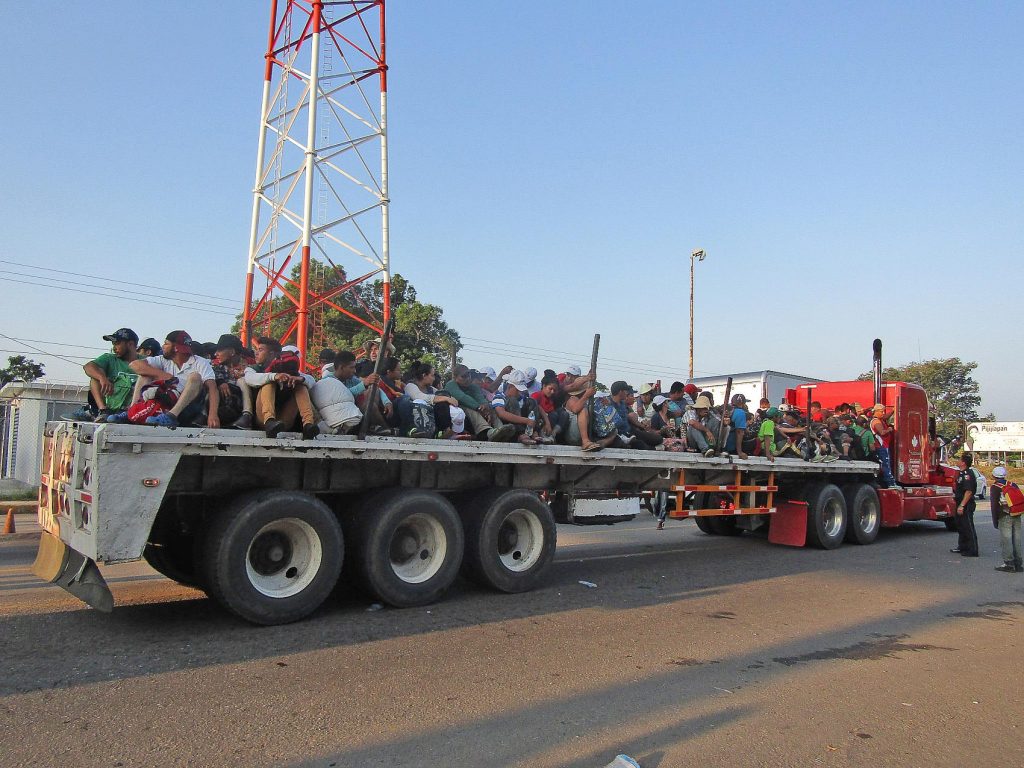Migration in Chiapas II

Since 1990, the Mexico-US migration corridor the biggest in the world, with 12.7 million migrants in 2017. According to data from the National Migration Institute (INM) from 2014, 68% of the documented crossings of non-resident foreigners in Mexico occur in the southern border of the country was made in Chiapas, that is, more than a million crossings; leaving the rest of the movements in Tabasco and Quintana Roo. The situation of extreme vulnerability in which the migrants find themselves and the violence they face on their way to the United States, mean that we speak today of a humanitarian tragedy in reference to their situation. In its report on migration, Amnesty International, in reference to migrants, points out that: “Their journey is one of the most dangerous in the world. Migrants suffer extortion, discrimination, beatings, sexual violence, kidnapping, and homicide at the hands of criminal gangs. Many of the cases presented highlight the involvement of public officials in various abuses against migrants to some degree.”
A special CNDH report on migrant kidnappings documents the alarming number of these by criminal gangs and the abuses related to them. According to the report, most of the kidnappings and the most serious abuses take place in the states through which the freight trains of the main routes used by migrants pass, such as Chiapas, Oaxaca, Tabasco, Veracruz and Tamaulipas. It must be remembered that due to their illegal situation and the complicity of public authorities in the violations of the rights of migrants, the number of complaints is well below the real number of violations.
For many years, most of the arrests were made after crossing Chiapas, mainly in Tabasco, Veracruz and Oaxaca. That has been changing in recent years.
Given the risks when crossing Mexico, as of October 2018, Central American migrants began to mobilize in caravans of thousands of people. Although at the beginning, the recently inaugurated government of Andrés Manuel López Obrador facilitated the conditions for these people through humanitarian visas, as of June 2019 and under strong pressure from the US administration headed by Donald Trump, Mexico began to take measures to lower the level of migration that crosses its territory to reach the United States. One of the most questioned measures was the deployment of the National Guard in the border areas (with more than six thousand elements on the Southern Border), as well as the change of rules for migrants originating from Africa and Asia, as it stopped allowing them travel to the northern border with authorization. These changes have generated extreme concern on the part of national and international civil organizations, including the United Nations, since they have implied an upsurge in violations of the human rights of migrants.
The current agreement also includes another aspect that has generated controversy, the United States’ policy called “Remain in Mexico“, which means that migrants have to wait in Mexico during their asylum process.
Social organizations have criticized that the increase in police and military surveillance will not stop migration but will lead it to resort to more dangerous and risky routes for its safety and integrity.
Another problem related to the containment strategy has to do with the saturation of migratory refuges that are exceeded in their capacity, up to 400% with “overcrowded conditions, without sanitation or adequate food or sufficient access to health services.”
In 2019, with 186,750 detained migrants, the vast majority Central American, the highest number of the entire decade was reached (42% more than in 2018), according to information from the Ministry of the Interior (SEGOB). Of those arrested, 80% were Central American. According to the National Institute of Migration, 70% of the arrests occurred in four states: Chiapas (81,351), Veracruz (22,080), Tabasco (17,339) and Oaxaca (8,619).
Between January and April 2019, 18,365 people applied for refugee status in Mexico, of which 11,219 did so in Chiapas. This represents an increase of about 300% for the same period of 2018. Between 2013 and 2019, the number of applicants increased by more than 5,000%. In April 2019, the Mexican Commission for Aid to Refugees (COMAR) indicated that it had a total of 38,832 people awaiting their processing in the country, of which 21,325 were in the state of Chiapas.
Sources: Amnesty International Report. “Invisible Victims. Migrants in Transit in Mexico.” 2010. Special reporto n Migrant kidnappings in Mexico, 2011. Original article at https://www.sipaz.org/facts-about-chiapas-iii/?lang=en#TRANSITOen
